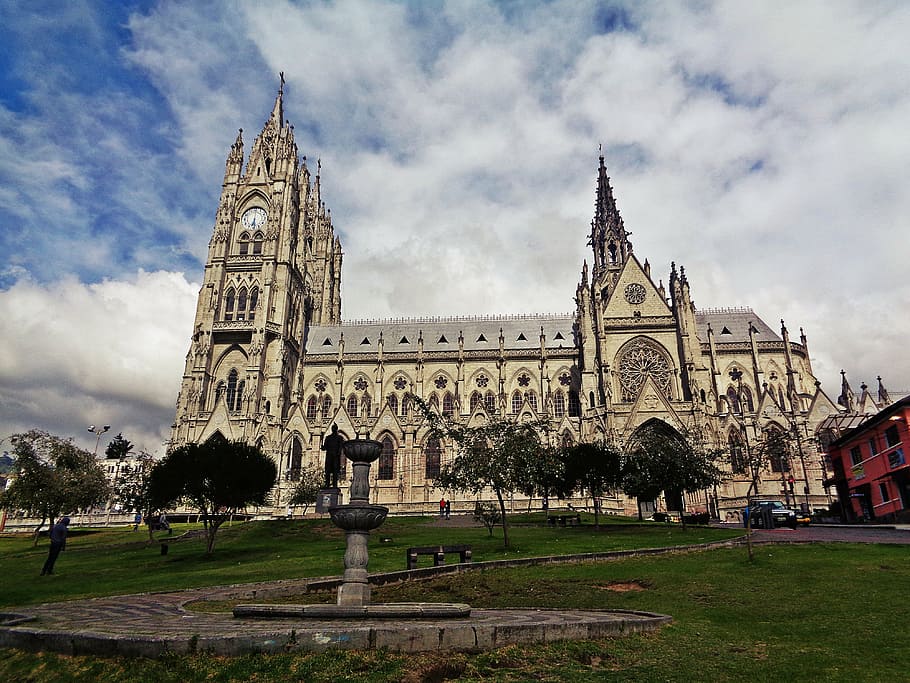This city is a real pearl of South America. The unique nature, rich cultural heritage and proximity to the equator make it a magnet for tourists from all over the world. Have you already guessed? Meet Quito! We have collected up-to-date information on when to go, what to do and what to try in the capital of Ecuador.
Tips before your trip
- The national currency of Ecuador is the American dollar, so there is no need to worry about exchange offices and favorable rates. We advise you to have small bills in stock.
- Almost all locals speak Spanish, Quechua and Shuar. Some tours for tourists and audio guides in museums operate in English.
- If you are choosing a place to rent a home, pay attention to the areas of Mariscal, Bellavista, Floresta and Carolina.
- Ecuador ranks second in the ranking of the highest capitals in the world. The city is located at an altitude of 2850 meters above sea level. At first, tourists may feel shortness of breath and dizziness. We recommend buying an oxygen mask at your nearest pharmacy or drinking an oxygen cocktail to cope with this problem.
- Buy wool products, copies of paintings, ponchos, jewelry and chocolate as souvenirs.
Best time to travel
Look no further than the best season to travel to Quito. This city is ideal at any time of the year. It's all about the proximity to the equator. The climate does not change for months, but depends on the time of day. This is what determines the weather and temperature outside the window. Locals say that all seasons of the year meet in one day in Quito. Morning - warm spring, day - sultry summer, evening - cool autumn, night - cold winter. For one day in Quito you may need a swimsuit, a hat, a T-shirt, shorts and a warm jacket.
Another important reminder: rainy season. This period in the capital of Ecuador falls on October-May. Please note: it does not rain for days on end. Usually heavy downpours come to the city only after lunch, so the first half of the day can be safely used for tourism purposes. If this option is not for you, plan your trip during the dry season from June to September.

What to visit?
Historical Center
This is a whole area with its own life, secrets and secret places. The historic center is a living witness to the history of the city, which has absorbed the spirit of each era of Quito's development. We recommend starting your acquaintance with the capital from this place in order to fully experience the whole atmosphere of the city.
Despite the time, this part of Quito is perfectly preserved. The historical center is a magician's hat that never ends in surprises. Walking along its ancient cobbled streets, you can thoroughly enjoy the best examples of colonial architecture, monumental cathedrals, luxurious squares and green parks. For a calm and safe exploration of the historical center, the authorities have specially designated pedestrian paths.
By the way, this place used to be a religious center not only of Ecuador, but of all of South America. Be sure to come to the heart of the centuries-old heritage of an entire continent.
Metropolitano Park
Welcome to Quito's largest city park and one of the largest on the entire continent. The capital of Ecuador is famous for its status as a “green” city, and the parks located right in the city played a significant role in this. The location of the Metropolitano is also of particular interest: climb to the top of the hill opposite the Pichinchi volcano to disconnect from the outside world and disappear into the greenery of the plants. By the way, the park’s area is 560 hectares, so you won’t have to look at the same locations.
The park plays an important role not only for aesthetic pleasure. For the huge number of plants and benefits for the surrounding world, it bears the proud title of “the lungs of Quito”. Most of the territory is occupied by eucalyptus trees, which can easily be sheltered from the hot sun. Another argument in favor of Metropolitano is the views of the Cotopaxi volcano and the Guayllabamba River, which open from its eastern part.

Basilica de Voto Nacional
Still worried that you never got to see Notre Dame in Paris? The Basilica de Voto Nacional will cope with this task perfectly. Locals really call it an analogue of Notre Dame Cathedral in Paris. This temple began to be built in the 19th century, but it is considered unfinished until today.
The basilica surprises with absolutely everything: its Gothic-style decoration, 115-meter height and views of the city. According to the plan, the builders had to strictly adhere to the Gothic style, but the usual gargoyles and chimeras gave way to animals from the national nature. On the walls and towers of the cathedral you can see sculptures of dolphins, turtles, monkeys and other animals.
For a bird's eye view of the city, head to the top of the temple ($2 to climb) and enjoy the views of Quito. You can take the elevator, and then go to a small bridge and a spiral staircase.
Volcano Cotopaxi
Have you noticed how many attractions there are in Ecuador with the prefix “most”? Cotopaxi is no exception: it is the highest active volcano on the planet, reaching a height of almost 5900 meters. It is located 50 kilometers from the city in a national park of the same name. The peaks of Cotopaxi are covered with snow all year round, and the ideal shape of the craters attracts thousands of photographers from all over the world every year.
Be sure to take a walk along the “Avenue of Volcanoes”, which leads directly to Cotopaxi. Don't be surprised if you see hummingbirds, llamas or deer - they roam freely around the natural park.
There are several ways to see the volcano: buy a tour of the park, set up a tent camp, or dare to climb. We recommend using the services of a guide to better navigate an unfamiliar place.
El Panecillo Hill
This hill is located in the very center of Quito. Its top is decorated with a monumental statue of the Virgin Mary. By the way, this is the tallest aluminum statue in the world. The 11-meter-tall Virgin Mary on a 30-meter pedestal is visible from almost anywhere in the city. Thanks to the wings on her back, she can be called not only a symbol, but also the guardian angel of Quito.
The view from the top of the hill can easily rival the views from the Basilica de Voto Nacional. You can go inside the statue and enjoy a 360-degree view of the capital for just $1.

What food should I try?
Ceviche
The main ingredient of ceviche is finely chopped fish, squid or shrimp, which are marinated in lime juice, orange juice, mustard and spices. Sometimes red onion and tomato ketchup are added to it. The snack is served with roasted corn, toast, banana cakes and even rice.
Caldo de pata
The first courses received a moment of fame even in South America. Almost all soups in the national cuisine are called “caldo”. We are talking about one of the most popular - de pata. It contains: corn, bananas, green beans, beef legs and tripe. Chefs do not spare vegetables for a rich dish. Chili and lime juice leave a spicy aftertaste. This hearty soup is ideal for both lunch and dinner.
Kui
In Ecuador you can try not only fish, beef or chicken, but also guinea pig. Yes, yes, livestock breeders specifically breed them for such purposes. Kui is considered the same type of meat as chicken, pork or beef, although it bears the title of a delicacy. Chefs cook the whole kuya on a spit and serve it with potatoes and vegetables. This dish tastes very much like chicken, but differs in the large number of bones.
Empanadas
Are you missing homemade pies? Hit the streets and look for empanadas. These crispy pies have become the most popular street food option in Ecuador. The variety of fillings is also surprising: you can choose cheese, ham, meat, beans, bananas, fruits and vegetables.
Patacones
This is a classic of Ecuadorian cuisine. The basis of the dish is bananas, which are first fried and then mashed into porridge, formed into flat cakes and deep-fried. The result is flatbreads with a very interesting and unusual taste. They can be ordered as a separate dish or as a side dish for fish and seafood.








 ios
ios
 android
android



 BYN
BYN  RUB
RUB 














